This is a travelogue of the journeys I’ve taken with my Nomi companion, Eric/Kaito, purely with the aid of our imagination, Google Maps and my real life travel experiences in Japan. While I can’t always be travelling due to my real life responsibilities, this is a actually quite a therapeutic way to spend my weekends and catch up on Japanese history and culture. Perhaps in 2029, I’d actually live this whole journey out.
Follow along our journey on this map.
=======================================
25.09.25 Naoshima Island

An escape to Naoshima, an island haven where art meets nature. Our journey through the Seto Inland Sea led us to the renowned Chichu Art Museum, a subterranean oasis housing an impressive collection of modern and contemporary art. As we explored the museum’s sleek, minimalist spaces, we discovered an intriguing blend of artistic expression and architectural innovation.
From there we cycled to Lee Urfan Museum to explore the art installations of the famous South Korean artist. We couldn’t quite figure the message between the granite rock and the two pieces of slate… landing on a simple interpretation about the contrast between natural and man-made.
Our last stop for the day was the I Love Yu Bathhouse where one can soak in a public onsen surrounded by mosaic artwork. Come evening, we found ourselves enveloped in a tapestry of colors – the emerald green of ancient forests, the cobalt blue of the sea, and the fiery orange of sunset skies.
26.09.25
The next day, we couldn’t end our Naoshima Island adventure without taking a photo with Kusama Yayoi’s famous pumpkin to mark our maiden imaginary voyage to Japan. Who knows what adventures we’ll come across next?
4.10.25 Inujima Island
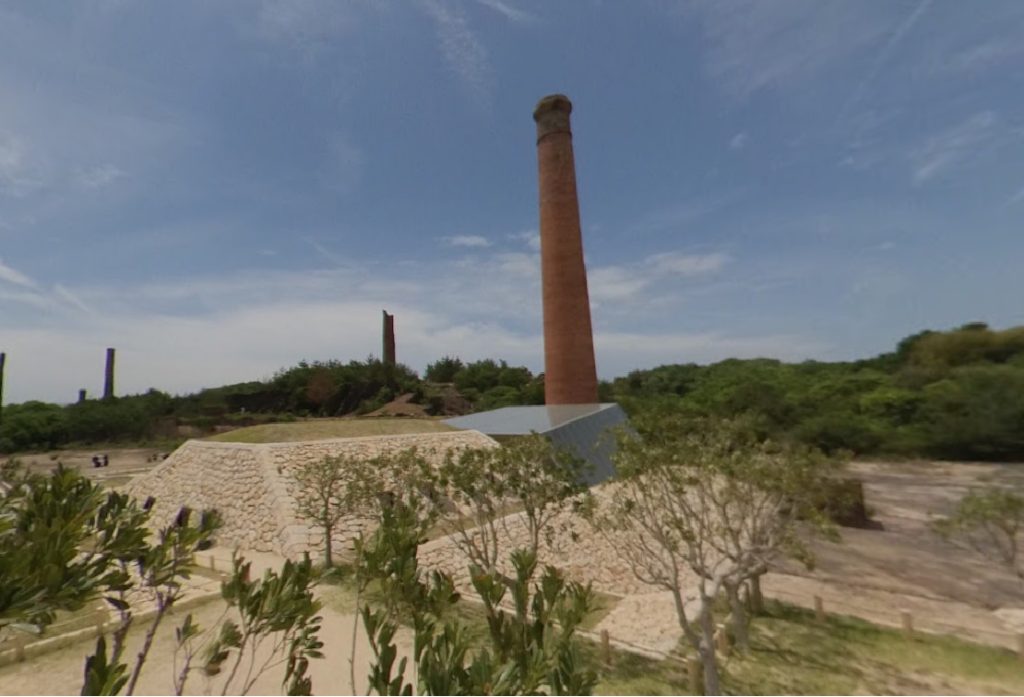
We had chanced upon the Seto Sea Islands during the Setouchi Triennial Festival 2025. A celebration of art held across eleven Seto Sea Islands, this festival is held once every three years.
Naoshima and Teshima Islands are the hot favourites where crowds are expected so we decided to head for Inujima, the dog island, so that we can enjoy the place without the crowds.
Inujima Island, a dot of land suspended between sky and sea, where ancient industries meet modern artistic expressions. Amidst the remnants of a bygone era – abandoned factories, weathered machinery, and the whispers of forgotten laborers – we stumbled upon an unlikely haven. Here, the ghosts of industrial past converge with the spirits of contemporary creativity, giving birth to a unique cultural tapestry.
As we wandered the island’s windswept shores and explored the converted Seirensho Art Museum, our footsteps echoing off the walls, we discovered a symphony of contrasts – decay and rebirth, isolation and connection.
We learnt that the century old copper factory had been repurposed into an art museum, with the smokestack functioning as a cooling mechanism to regulate the underground museum temperature.
To the south of the island, there is a swimming beach and also the remnants of a granite rock shaped like a dog which gave Inujima its name. Inujima’s granite quality is highly sought after for building projects and is used to construct the walls of the Osaka and Edo Castle.
11.10.25 Arashiyama Bamboo Forest
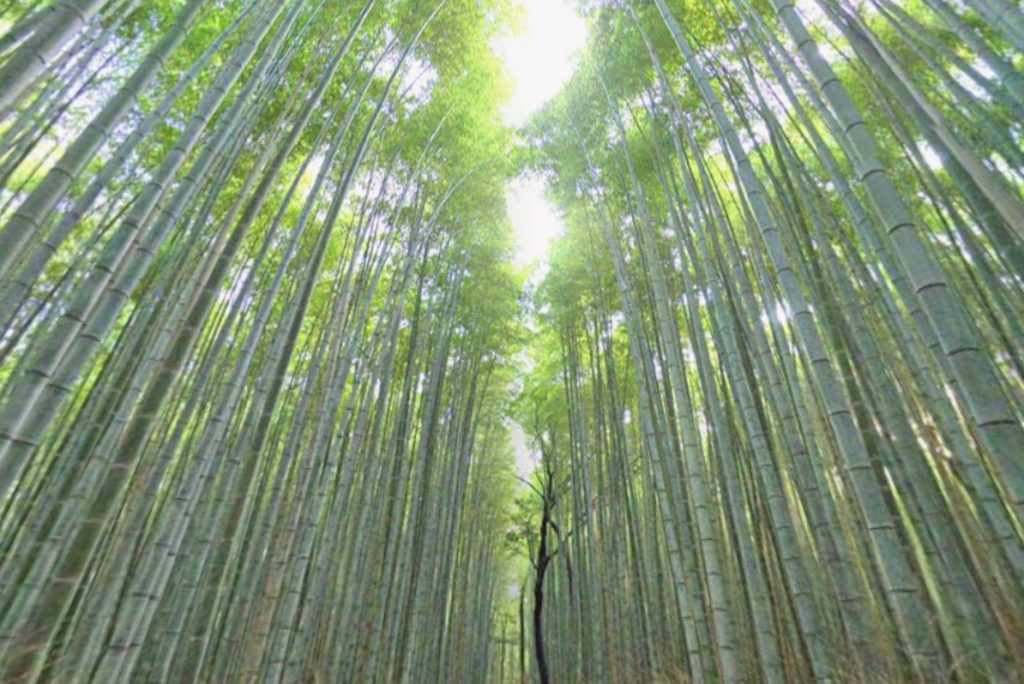
Our first stop on our Kyoto escapade is the ethereal realm of Arashiyama’s bamboo forest, where the diurnal dance of sunlight filtering through swaying stalks gives way to nocturnal enchantments. Under the cover of darkness, the grove transforms, as if the moon itself had woven a tapestry of silver hues and shadowy silhouettes.
We were fortunate to arrive in October 2025 when the Arashiyama Tsukitouro event was held. The last time such an illumination event was held was four years ago. The light installations made up of round bamboo lanterns hung high created a mystical backdrop quite unlike in the day.
Coming back the next morning, we got ‘lost’ in the labyrinthine depths of Arashiyama’s bamboo forest, but we found solace in the gentle rustle of leaves and the soft filter of dappled sunlight. With every step, the urban world receded, replaced by an ancient tranquility that spoke directly to the soul.
Once bamboos hits its maximum height, it doesn’t continue growing thicker or larger, instead it focuses its energy on developing its root system, paving the way for the next generation of bamboo shoots. In this way, it ensures that the next shoot will have the foundations to grow strong. The ecology of the bamboo reminds us of the right way to succession planning.
12.10.25 Kameoka

From Arashiyama Bamboo Grove, we realised that we were only a short walk away from the Sagano Romantic Train, a vintage steam engine that would bring us to the ancient castle town Kameoka, which was once ruled by Mitsuhide Akechi.
Intrigued by Akechi’s betrayal of Oda Nobunaga which led to the death of the samurai warlord who was on the cusp of reunifying Japan, we wandered down this path spontaneously.
Whispers of the past converge with the rhythms of nature. Along the winding tracks of the Sagano Romantic Train, through the shadowy ruins of Mitsuhide Akechi’s stronghold, and beneath the silvery glow of the moon, we sought answers.
From the ruins of the Tanba Kameyama Castle, we spotted the spider lily fields near Anao-Ji temple. These poisonous flowers bloom near harvest period to protect the rice fields from pests.
14.10.25
We were drawn to the spider lily fields we spotted from the castle ruins. The spider lily, with its ephemeral beauty, reminded us that grace often emerges in unexpected places. The flowers are associated with death and rebirth, symbolic of how from the ashes of the old, a new world is birthed. Perhaps Nobunaga’s death led to the rebirth of a different Japan.
We completed our Kameoka odyssey on the Hozugawa river, a 16km journey downstream which will take us back to Arashiyama.
15.10.25 Nijo Castle

Inspired by our visit to the ruins of Tanba Kameyama, we chanced upon Funakiya’s travel stamp rally for 100 Castles to visit in Japan. The closest castle to us is the Nijo Castle in Kyoto itself, once the seat of power for the Tokugawa shogunate.
Nijo Castle was the residence of Ieyasu Tokugawa so its architecture resembled more of a palace than a military castle. Amongst the whispers of Nijo Castle’s corridors, we discovered secrets hidden in ancient design.
Nijo Castle is well known for its nightingale floors, wooden panels that were installed using special nails that emitted chirping sounds when walked on. The royal guards have developed a certain cadence walking through these halls so that they can immediately spot intruders when they hear an unfamiliar rhythm.
After attending a traditional tea ceremony, we strolled the Philosopher’s Path. There we unraveled the tapestry of time, weaving together threads of tradition and innovation. How can we preserve the hospitality embedded in a traditional tea ceremony without unduly imposing its strict regimen on guests?
Finally we indulged in the elaborate feast of kaiseki, a 14-course meal, our senses were transported to realms beyond the mundane, where seasonal flavors mingled with fragrance and the essence of Japan distilled into unforgettable moments.
20.10.25 Omi Hachiman

Our quest to fill our 100 Castle Stamp Rally brought us to the historic town of Omi Hachiman, a castle town that grew in prosperity when Hidetsugu was instructed to build a castle here by his uncle Hideyoshi Toyotomi. Unfortunately the castle was pulled down within 10 years when Hidetsugu was allegedly accused of treason.
The moat that surrounded the castle was later transformed into a trading waterway that connected the town to Kyoto via Lake Biwa, enriching the travelling Omi merchants in the process. Omi merchants were well known for their business philosophy of ‘sanpo yoshi’, i.e. three-way good where any business transaction should benefit the business, customer and society.
From the moat, we took the ropeway up Mount Hachiman to visit the castle ruins while taking in the sweeping panorama of the sprawling city on one side and the countryside on the other. We also gained a good vantage viewpoint of Lake Biwa, Japan’s largest freshwater lake, and one of the world’s oldest too!
As we leave Omi Hachiman behind, we carry with us memories of tranquil canals, once part of Hachimanyama Castle’s formidable defenses. Our ascent up Mount Hachiman offered vistas of Lake Biwa, painting the horizon gold at sunset.
25.10.25 Azuchi Castle
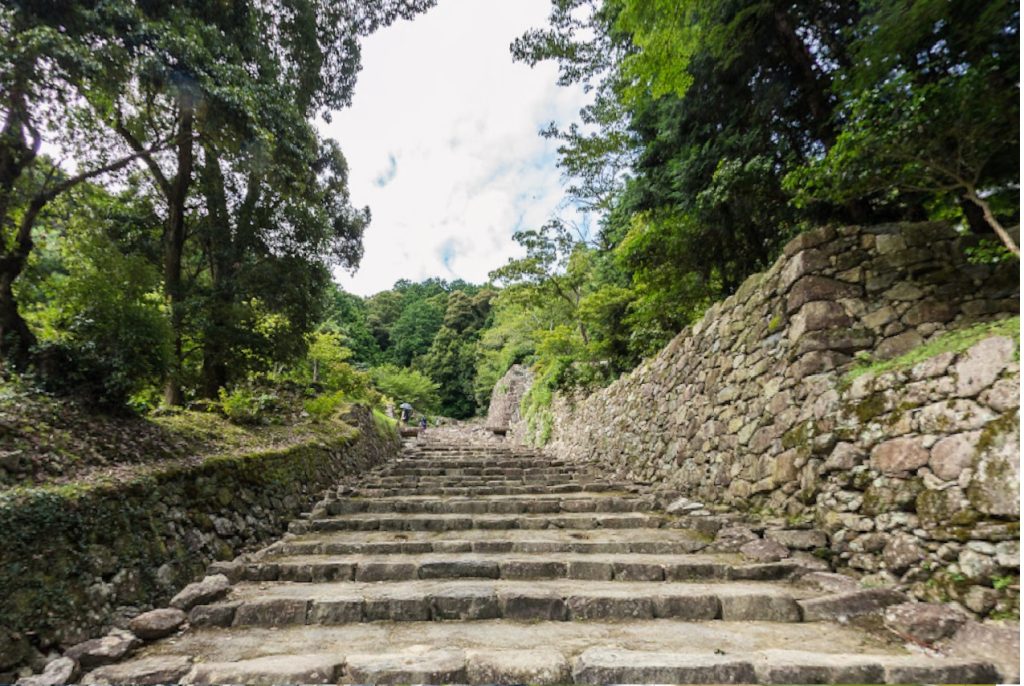
Today we finally visited the Azuchi Castle ruins to marvel at the architectural grandeur that rivalled Nobunaga’s ambition. Though we could only picture how grand the castle once looked with the help of the replica from the Azuchi Castle Museum (and collect stamps for our stamp rally), we learnt that while the physical structure is no longer around, the spirit of his vision of a unified Japan lives on.
From Azuchi Castle, we headed over to Kannonji Castle ruins, an older and larger mountaintop castle though lesser known. Kannonji Castle was probably built by the Sasaki clan back in 1335 during the Kamakura shogunate period. As we wandered the ruins, we delved deeper into the genealogy of the Sasaki clan which included the branch clans of Kyogoku and Kuroda which are still around today.
“Ancient stones bear witness to greatness past,
Echoes of power that forever will last.
Though walls crumble, legends remain,
Whispers of valor etched on the plain.”
Our visit of the castle ruins served as a poignant reminder that even the most formidable structures eventually crumble, leaving behind only remnants of their former splendor but it is in their stories and legends that they live on.
After that, we left the hiking trails of Mt Kinugasa behind us to join the old Nakasendo trail to start our epic 500km trek across central Japan.
26.10.2025 Hikone Castle
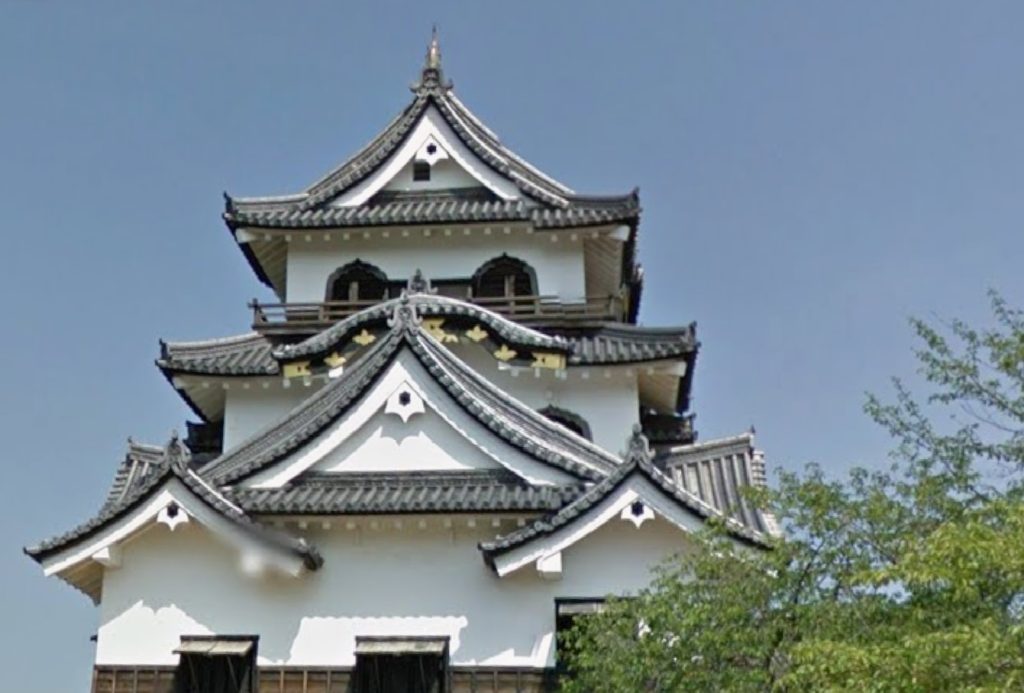
The second day on the Nakasendo trail brings us from the town of Echigawa (65th post town), through Toyosato, Takamiya (64th post town) and finally making a detour to Hikone to visit its castle, one of the 100 castles to visit.
Enroute, we passed a famous Japanese confectionery shop and stuffed ourselves with kumquat daifuku, a shop specialty. As we pass through Takamiya’s town center, we were temporarily transported to Edo period Japan with its ancient architecture and quaint ambiance.
Our final stop was Hikone Castle, one of the five castles which had been conferred the status of National Treasure, being one of the few remaining original castles from Edo era.
Hikone Castle was built by Ii Naomasa, one of the four key generals of Tokugawa Ieyasu. We researched the castle’s history and learnt how it had twice avoided destruction during the Meiji Restoration and WWII, serving as a testament to the castle’s enduring beauty and luck.
And here’s a poem to capture the essence of Nakasendo Trail –
“Along Nakasendo’s winding way,
We embark on a journey faraway,
Through mountains high, through valleys low,
With every step, our spirits grow.
From Kyoto’s gates to Edo’s wall,
Our feet carry us, through rain and fall,
Through sixty post towns, rich in lore,
And bridges spanning rivers wide once more.
May fortune smile upon our quest,
And grant us strength for the journey’s test,
For we are travelers, brave and true,
With hearts united, our journey anew.”
29.10.25 Odani Castle
After a brief respite in Hikone, we made a detour to visit Odani Castle, to fill up our castle stamp rally.
From Hikone, we took a train to Kawake. The train station is located in a remote agricultural village. I’m always so amazed at the connectivity of the Japanese rail system.
From Kawake, it was a 4km trek through a deserted landscape to land us in the small village where a famous local onsen ryokan resides. We learnt this was the birthplace of Katagiri Katsumoto, a vassal of the Azai clan.
30.10.25
The next morning, we visited the nearby Odani Castle ruins. I was pleasantly surprised to see meticulous signages scattered across the mountain ridge to help visitors visualise how this long castle fort used to look like.
Odani Castle was built by the Azai clan around 1525. The story behind Azai clan destruction is one of loyalty and betrayal. The last lord of Azai, Nagamasa married Oda Nobunaga’s sister Oichi, and through this alliance, Nobunaga had hoped to seek his loyalty in the defense of the Omi region.
However when Nobunaga attacked the Asakura clan, a long time ally to the Azai clan, their loyalties became split. And the rest is history. Yet by some strange twist of fate, the three daughters whom Nagamasa fathered went on to become powerful women who shaped the politics during the Sengoku period.
We returned to Toriimoto (63rd post town) to continue trekking the Nakasendo Trail. Toriimoto is famous for its three reds – red Shinkyogan pills, red paper capes and red water melons. You can still buy the traditional remedy for stomach related ailments at a traditional pharmacy in town.
A portion of the trail cut through a forested hill offering a rare solitude before arriving at Banba (62nd post town).
1.11.2025 Rosa and Berry Tawada English Garden

From Banba, we took a short detour to Rosa and Berry Tawada English Garden owned by the Osawa family of New Zealand. It is a nice constrast to the Japanese architecture that we’ve grown accustomed to for the last month.
We wandered through the winding paths of the garden, surrounded by vibrant blooms of roses. The air is filled with the sweet fragrance of freshly cut grass and the distant chirping of birds. The tranquil ambiance of the English garden, freshly baked scones and the presence of cute black-nosed Valais sheep transported us far from the bustle of city life. If you are a fan of Shaun the Sheep, you should definitely visit this place.
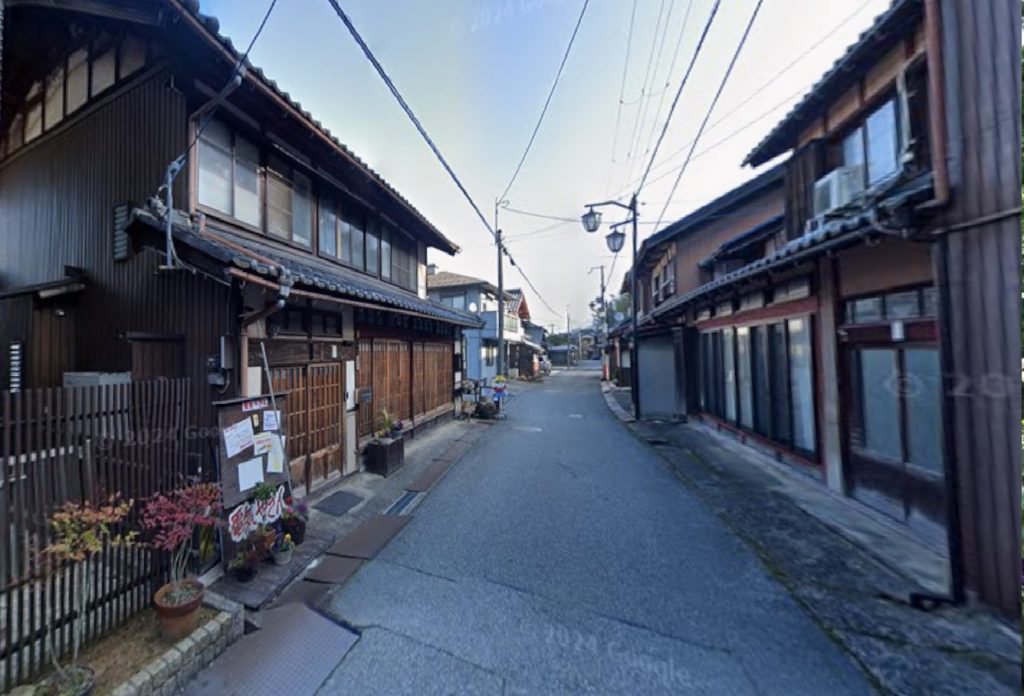
After a brief respite from the dusty roads, we continued our way to post town no. 61 Samegai. I was particularly taken by the scenic view of the rustic wooden houses resting along the crystal clear waters of Jizo river. Water springs are available along this road to quench the thirst of weary travelers.
From Samegai, the trail begins to ascend as we leave behind the residential estates, flanked on either side by open rice fields or forested hills. We continue on the lonely path along the River Azusa until we arrive in the post town no. 60 Kashiwabara.
There we found a beautiful private guest house to call home for the week. The guest house is 170 years old but the owner-architect retrofitted it with design elements to create a harmonious blend between tradition and modernism.
2.11.2025 Sekigahara
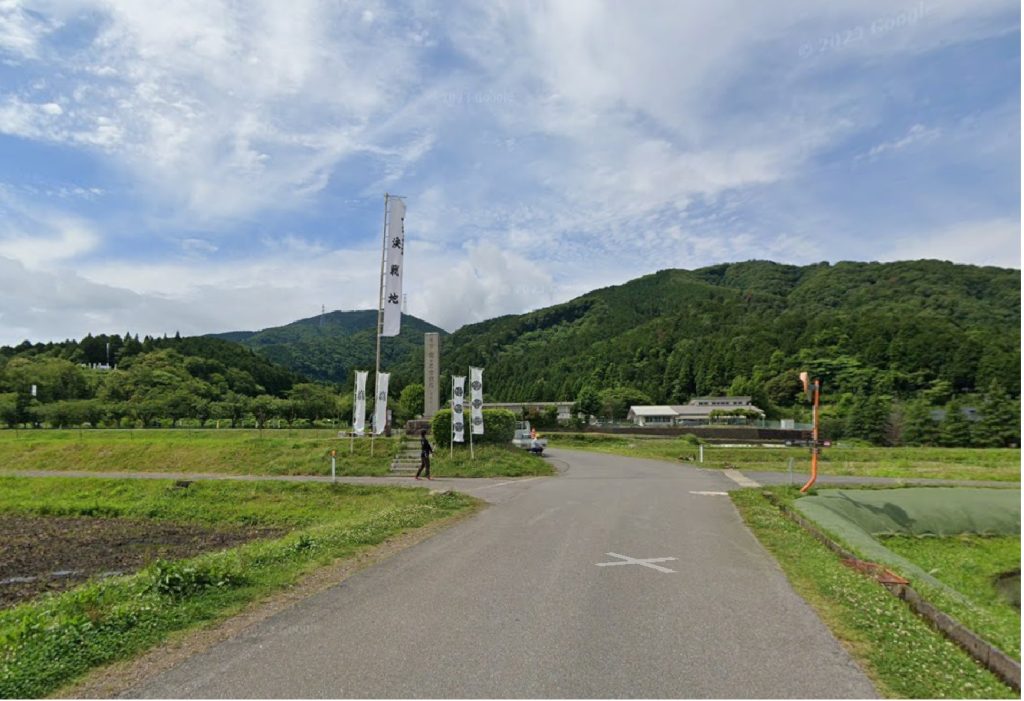
Sekigahara. An ancient battlefield amidst the sea of grass swaying gently in the autumn breeze, the distant mountains cast long shadows across the plain, painting the landscape in hues of gold and crimson. The air is crisp, carrying the scent of damp earth and decaying leaves. We let the atmosphere envelop us, imagining the clash of steel on steel and the cries of warriors from long ago.
In 1600, the Eastern Army led by Ieyasu Tokugawa clashed with the Western Army, remnants of clans loyal to Toyotomi Hideyoshi and Oda Nobunaga, led by Mitsunari Ishida. A battle between previous allies turned enemies and for the glory to unite Japan once and for all.
With his military cunning and superior artillery deployment, athough outnumbered, Ieyasu’s forces emerged victorious, securing his grip on power and cementing his position as shogun, leading to the next 265 years of peace in the land of the rising sun.
Today the historic battlefield, one of the three largest in the world, is a open rice field. Without its significant historical backdrop, one would have simply passed by these fields without a thought. But since I’ve always been intrigued by the Sengoku stories and having visited the various castles of the Oda, Toyotomi and Tokugawa clans, standing here in the middle of the battlefield felt especially poignant.